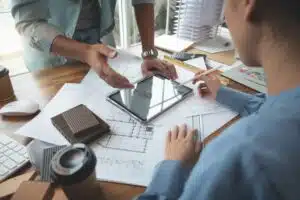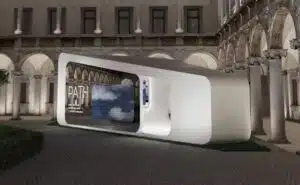Urban areas are growing and with them the number of people living in cities. This considerable growth in urban density brings with it the need to rebalance inhabited spaces with green areas and the need to develop accessible and sustainable green spaces to improve the quality of life. The construction of an Urban Green Atlas has become a key practice in addressing this challenge, offering a comprehensive method for planning and managing green spaces in cities.
This tool provides a clear overview of urban green types, helping authorities and planners to create more sustainable, beautiful and habitable cities. Collaboration between the community, institutions and landscape designers is crucial to ensure the success of these projects.
Methodology for the Construction of the Urban Green Atlas
That of the construction of the Urban Green Atlas is one of the topics of the specialisation course in Green Urbanism by Italian Design Institutea highly specialised full-immersion course to learn advanced green design techniques in urban spaces, learning how to manage a project in all its phases.
La construction of the Urban Green Atlas requires a clear and well-defined methodology, which can be simplified in a series of steps:
- Inventory of Green AreasThe first step is to identify, map and catalogue all green areas in a city. This includes parks, public gardens, open spaces, recreational areas and anything else that falls within the definition of 'urban green'.
- Classification of Green TypesOnce the data has been collected, urban green spaces are classified into categories and types. This classification is essential to understand the diversity of green spaces present and to identify specific planning and management needs for each type of area.
- Assessment of CharacteristicsEach green area is evaluated according to criteria such as size, accessibility, vegetation, history and use. These data are important to determine the potential and challenges of each area.
- Community InvolvementCommunity participation is crucial. The inhabitants of the city should be involved in the creation of the Urban Green Atlas, with opportunities for feedback and input.
- Planning and Sustainable DevelopmentWith a synoptic overview of urban green types in hand, planners can develop sustainable growth strategies. This involves creating new green spaces, redeveloping existing ones and implementing sustainable management policies.
The different types of Urban Green: an overview
The Urban Green Atlas classifies green types into different categories, each of which requires specific planning:
- Central ParksThey are true green lungs for the city and often, including recreational and cultural areas, are also meeting places for public events.
- Community GardensThese are spaces managed by the community and often used for the cultivation of vegetable gardens or shared gardens. They can promote connection between residents.
- Urban Waterways: Rivers, lakes or ponds within the city. They can be used for recreational purposes or as a source of drinking water.
- Vertical Green Spaces: Hanging gardens, green walls or flowered balconies. These contribute to the reduction of air pollution and the heat island effect.
- Protected Natural AreasThese are areas where nature is protected and conserved. They may include nature reserves or regional parks within the city.
- Historic Gardens: These gardens are often linked to historic buildings and represent a cultural and landscape heritage to be preserved.
- Playgrounds: Specially designed spaces for children with play areas, sports fields and recreational equipment.
- Green CorridorsThese are linear green routes, such as bicycle paths and tree-lined streets. They can connect different green areas in the city.
- Commercial Green Spaces: Gardens and green areas at shopping centres and corporate facilities.
Let us not forget that urban greenery plays a fundamental role in cities, as it contributes to a number of structural and social benefits for modern cities.
The Benefits of Green in Cities
- Air Quality Improvement: Greenery absorbs carbon dioxide and other air pollutants, improving air quality in cities. Plants, through photosynthesis, return oxygen to the environment, making the air healthier for citizens.
- Mitigation of the Heat Island Effect: Urban greenery such as trees, parks and gardens help mitigate the heat island effect, cooling cities and making the environment more comfortable.
- Health and Well-being: Green spaces provide places for recreation and relaxation for citizens. The presence of parks and green areas encourages physical activity, reduces stress and promotes psychological well-being.
- Urban Biodiversity: Urban greenery can serve as a habitat for local fauna and flora.
- Rainwater control: Green areas absorb rainwater, reducing the risk of flooding and helping to maintain the cities' water balance.
- Increase in Property Value: The presence of well-maintained green spaces in a city can increase the value of surrounding properties.
- Quality of Life: Green areas add an element of beauty and serenity to the urban environment. They help create community meeting places and foster a sense of belonging.
- Sustainable Planning: Urban planning that incorporates greenery contributes to the sustainable growth of cities. The presence of green spaces can reduce the need for further building development and promote greater environmental sustainability.
- Tourism and Attractiveness: Cities with large green spaces are often more attractive to tourists. Well-tended parks and gardens can become tourist attractions in their own right.




